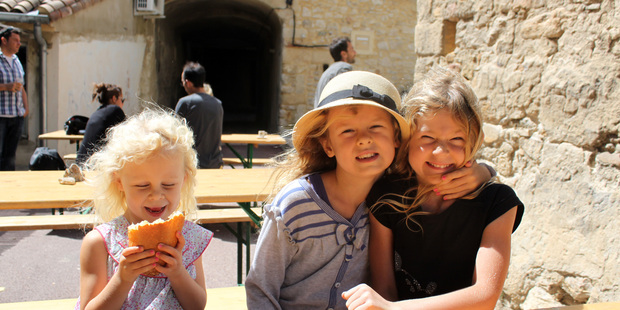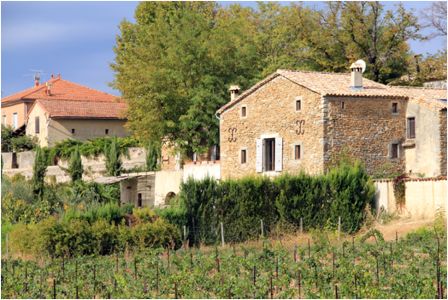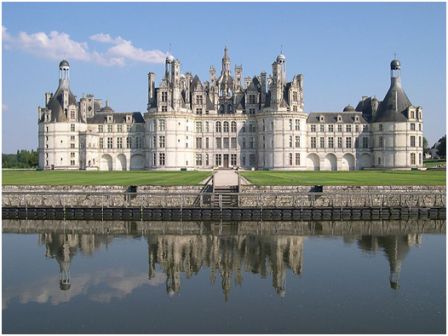We arrived in the Languedoc-Roussillon region in the southeast of France with a long list of things to do. The priorities were to find somewhere to live, buy a car and enrol the girls in school. And to complicate matters further, my French was terrible.

After five weeks of searching, we ended up in a small village in Sabran, about 40 minutes north of Avignon and 20 minutes from Uzes on the eastern boundary of the Languedoc region.
It was perfect, hot summers - up to 45C - and cold winters - down to about -12C at worst. The locals made us welcome by inviting us into their homes, providing home-made goat cheeses, chestnut jam, truffles, regional wines and recipes and helped as best they could with my poor French and daily struggles.
We were tested in new ways. In winter the water pipes froze solid for a week and I had to light three fires a day just to keep the stone house warm. In summer, scorpions roamed throughout the house and I learned to keep the shutters closed during the day to keep the house cool.
I learned to write cheques French-style (yes, they still use them widely) drive the narrow roads like a local, swinging on and off the roads to make way for oncoming cars barrelling along in the other direction and visit the doctor/hospital/chemist with various childhood ailments that tested my oral and sign-language skills.

Caitlin and Michael Wright in Lyon
Our children attended the local primary school, my three-year-old was in the attached maternelle and all the children became fully immersed in school life. They were invited to birthday parties, sleep-overs and family lunches.
My three-year-old learned to make croissants, grape juice and paint in the style of Johan Miro. There were as many similarities as differences, games like hide and seek and Tag are universal. But there was no school on Wednesdays, the children ate a hot meal every day at the cantine, learned to write with fountain pens in cursive script and took field trips to culturally significant movies such as Jean Cocteau's La Belle et La Bete (1946).
Each village had a market on a different day so you could shop at a village market every day. After a while we found our favourites and special stalls in them. I still remember buying salted cod and being advised on the ways to cook it by the fishmonger and three or four people standing in line. Chickens came with feet and head attached. Meat was cut differently so scotch, eye and rump steak had no real equivalent. Dogs stood in line at the butcher's with their owners. In fact, dogs went everywhere.
We became more in touch with seasonal produce based on what we could see growing around us and what appeared in the market: currants, raspberries and figs in summer; asparagus, cherries and strawberries in spring; mushrooms, truffles and pears in winter.
On our return I was stunned by the high cost of food here. We foraged in the woods: blackberries, asparagus, thyme and mushrooms grew wild. Truffles were around but people guarded their spots carefully. In October, the woods rang with gunfire as hunters chased the sanglier (wild boar) and later, the migrating birds.
We were determined to see as much of France as possible and we did. We bought a car and, taking advantage of France's excellent roads and rail, we drove or took the train to the Loire, Bordeaux, Toulouse, Paris, Morzine (for skiing), Lyon, Nice and Marseille and everywhere in between. It was relatively easy and cheap.
We visited Nimes, Avignon and Montpellier fortnightly because they were our closest cities for banking, shopping and the endless form-filling that seems to be required in France.
I became a major fan of the TGV - three hours to Paris from Avignon compared to six hours by car. But there were also lots of interesting things to visit close by - the Pont du Gard, an ancient Roman aqueduct; the Roman arena in Nimes; ruins of Celtic forts on surrounding hills; Avignon's papal palace, and Carcassonne's medieval fortress.
History came in layers: the Celts, the Romans, the Visigoths, the Franks, and so on. I don't know how much my children absorbed but I'm glad they saw these places and got a sense of them.
Many of the highs we experienced are simply those associated with travel, meeting new people, strangers' random acts of kindness, walking among ancient ruins, and the simple beauty of France.
Yes, we would have done things differently but it was the best 14 months we, as a family, have experienced together yet.


(3).jpg)
(3).jpg)
(2).jpg)
(2).jpg)
.jpg)
(1).jpg)
(2).jpg)
(2).jpg)
(1).jpg)
(1).jpg)
(2).jpg)
(4).jpg)
(3).jpg)
(2).jpg)
(2).jpg)
(1).jpg)
(2).jpg)
(1).jpg)

